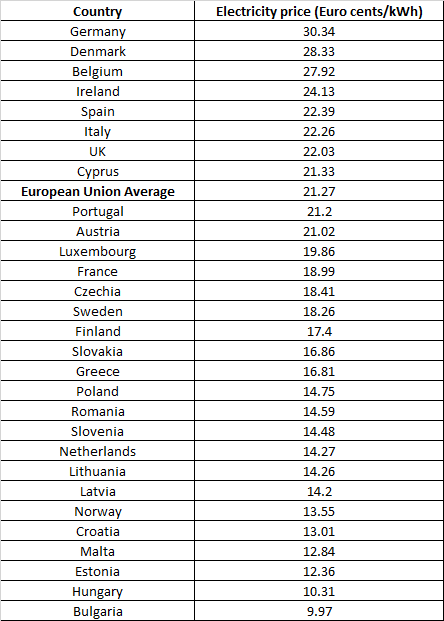Why Does Norway Have So Many Electric Cars?
While researching for another article, I found some shocking information: There is a country in the world where 75% of all vehicles sold are electric. This country is Norway. But how Norway has so many electric cars?
All this is even more surprising when you consider that only 4.2% of all the vehicles sold on the planet are electric vehicles (EVs).
My first reaction after discovering this was to think about the reasons for the enormous success of EVs in Norway. Here are some of my guesses:
1st theory: Norway is a high-income country, therefore it is easier for people to buy the more expensive EVs.
The reason it is wrong: If that was the case, EVs would also be a success in similarly high-income countries like Switzerland or Ireland, but there they represent only 14.3% and 7.4% of the vehicles sold.
2nd theory: Norwegians have a high level of environmental awareness, therefore they prefer to spend more to reduce gas emissions.
The reason it is wrong: Let’s ignore the fact that not always EVs reduce gas emissions — if the energy matrix of a country is based on coal, EVs can even make it worse. This 2nd theory is wrong simply because Norway is far from the top in terms of environmental consciousness. The most eco-friendly countries in the world are Denmark (Copenhagen is an example of safe and green city), Luxembourg, and Switzerland, and the EV market share in these 3 are only 16.4%, 11.4%, and 14.3%.
3rd theory: Norwegian government has heavy subsidies for EVs, so people buy them because of these incentives.
The reason it is wrong: There are some incentives for electric vehicles in Norway, like reduced toll charges and parking fees. The Norwegian subsidies are, however, minor compared to what other European Union countries offer. In Germany, for example, buyers of electric vehicles costing less than 40,000 euros can apply for a premium of up to 9,000 euros. Still, only 13.5% of all the cars bought by Germans are EVs.
All my initial theories were wrong. Later, however, another piece of data revealed the answer.
Why Are Electric Cars So Popular In Norway?
The short answer: because Norwegians can do the math.
The long answer starts with a table. Below are the electricity prices in 29 different European countries.

Norway has one of the lowest electricity rates in entire Europe, despite being the 3rd richest nation on the continent (below only Luxembourg and Switzerland, and excluding micro-states).
According to the UN, the per capita income of Romania is US$12,914. This is less than 20% of the Norwegian income (US$74,986). Even so, Romanians pay more for electricity than the average Norwegian resident.
Using a fuel cost calculator, we can check that, with similar cars, electric vehicles in Norway have a fuel cost per mile of 3.5 cents against 19.1 cents per mile of petrol cars.
Let’s put it into perspective with one hypothetical example:
You live in Norway and drive an average of 10 miles (16 kilometers) per day. You need to decide between an electric Nissan Leaf and a non-electric Nissan Juke.
- With the Leaf, your annual fuel costs will be 128 euros.
- Buying the Juke, your annual fuel costs will be 697 euros.
Which car would you buy? And that is why….
The percentage of electric cars in Norway is above 70%!
75% of the vehicles in Norway are electric because there, electricity is crazy cheap compared to petrol prices. In another article, I wrote about the rules to follow before buying a car. I think Norwegians follow them.
Electricity in Norway is cheap because they produce enormous volumes of energy at a low cost.
They produce so much energy that they export it to other European countries. Norway is the largest exporter of electricity in the European market, and Norwegian hydropower is a major contributor to that export.
It is a virtuous cycle that boosts Norway’s electric vehicle market share.

How Does Norway Produce Electricity?
Norway’s 22 hydroelectric plants produce about 96% of the country’s electricity Hydropower demands very specific geographic features as rivers with large terrain unevenness, therefore it cannot be used everywhere — it represents only 16% of the world’s electricity
Norway’s hydro plants, first developed in the late 19th century, use water falling from glaciers to produce electricity and were among the first in the world to harness that kind of power. The artificial lakes that makeup Norway’s hydroelectric reservoirs are some of the largest in the world.
The country is also looking to expand hydroelectric production, investing close to $200 billion in renewable energy projects, including $30 billion for hydropower expansion, making Norway one of the most energy-independent nations in the world.
This is the same strategy adopted by an African country on the road to be a powerhouse.
If you liked this article, maybe these are also for you:
The Most Beautiful European Capitals in 2023
4 Industries and Jobs That Will Disappear Due to Technology
Before Investing in Emerging Markets, You Should Have These Characteristics
Levi Borba is CEO of expatriateconsultancy.com, creator of the channel The Expat, and best-selling author. You can check his books here, his other articles here, or his Linkedin here.
As an entrepreneur, the help I found on Fiverr and Freelancer.com was essential for a smooth beginning.
To Join Fiverr and start with a $20 Bonus, Click Here.
Join Freelancer using this link and earn a USD20 discount on your first purchase




